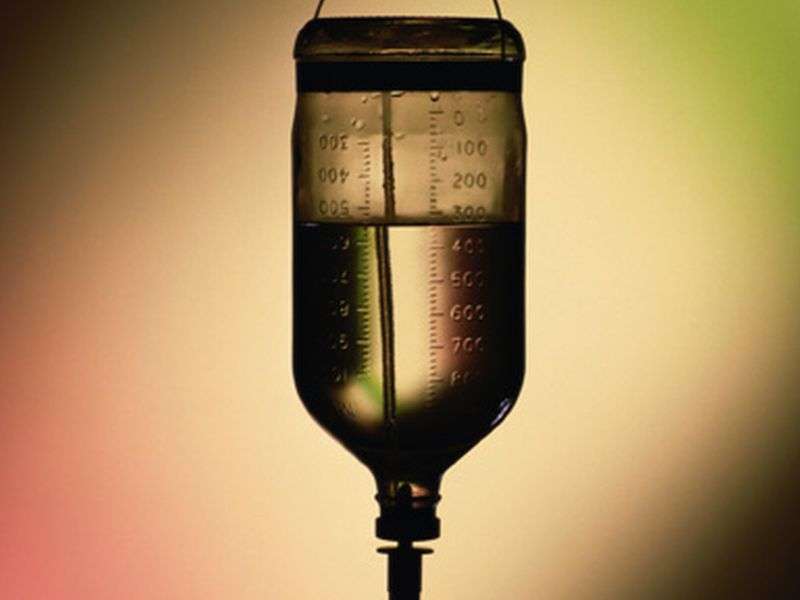(HealthDay)—A dosage of 1 g intravenous acetaminophen every six hours yields serum concentrations below 10 µg/mL for critically ill multiple-trauma patients, according to a study published online April 17 in the Journal of Clinical Pharmacology.
Oscar Fuster-Lluch, Ph.D., from the Hospital Universitari i Politècnic La Fe in Valencia, Spain, and colleagues examined the pharmacokinetic profile of intravenous acetaminophen administered to critically ill multiple-trauma patients after four doses of 1 g every six hours. Serum and urine acetaminophen concentrations were assessed and used to calculate pharmacokinetic parameters. Data were included for 22 patients (age, 44 years), mostly males (68 percent), who were not obese.
The researchers found that the maximum acetaminophen concentration was 33.6 µg/mL and the minimum concentration was 0.5 µg/mL. All values were below 10 µg/mL and eight were below the limit of detection. Serum and renal clearance were 28.8 L/hour and 15 mL/min, respectively. For a steady-state minimum concentration of 10 µg/mL, the theoretical daily dose would be 12.2 g/day; the dose would be 6.9 g/day for an average steady-state concentration of 10 µg/mL.
"In conclusion, administration of acetaminophen at the recommended dosage of 1 g per six hours to critically ill multiple-trauma patients yields serum concentrations below 10 µg/mL due to increased elimination," the authors write. "To reach the 10 µg/mL target, and from a strictly pharmacokinetic point of view, continuous infusion may be more feasible than bolus dosing."
More information:
Abstract
Full Text (subscription or payment may be required)
Copyright © 2017 HealthDay. All rights reserved.























